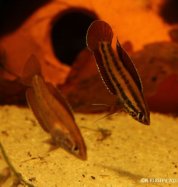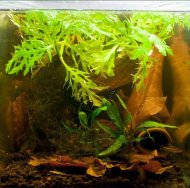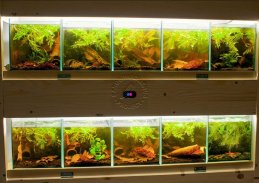For someone with a good knowledge of parosphromenus species there are exciting things you can do.
There are different methods of operation of effective Parosphromenus aquarium maintenance. If you have found one successful method you may however find it appealing to try another . If it fails at least you know the safe method works !.
Most species of the harveyi-group make it necessary to observe all details exactly. There are robust species, (like P.filamentosus or P.paludicola), suitable for beginners, that forgive some sloppiness (although not in the egg or larval stage); but species of the harveyi-group do not.
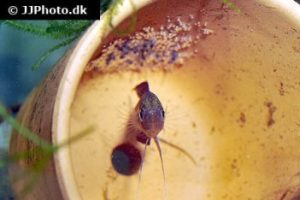 –But the two slim species, Pornaticauda and P.parvulus place particularly high demands on care and expertise.
–But the two slim species, Pornaticauda and P.parvulus place particularly high demands on care and expertise.
Breeding these two species is the “high school” of the licorice gourami hobby. Frequently it even leaves experienced authorities with unsolved mysteries. Often the spawns are small (10 –20 eggs), and disappear overnight. However it must be added that sometimes you can find pairs that are good spawners and carers.
Whereas beginners should rely on the extensive breeding experiences where only a few offspring grow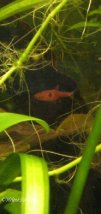 up, intensive breeding methods for experienced aquarists could be worthwhile exercises.
up, intensive breeding methods for experienced aquarists could be worthwhile exercises.
–Associating Paros with other small and calm fishes, as well as shrimps, could be a charming exercise for advanced licorice gourami enthusiasts. Someone who brings appropriate knowledge can put a charming and biologically meaningful display together..
–The care of a larger aquarium with licorice gouramis with a corresponding accompanying fauna could be an especially attractive challenge for advanced aquarists who have produced enough young fishes
(PF)
